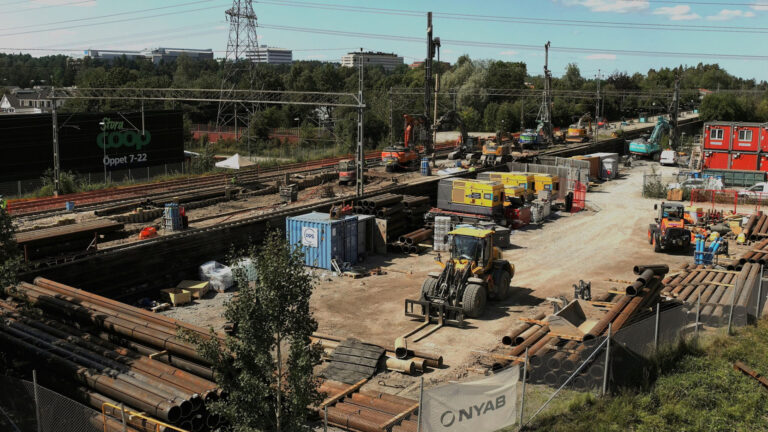Skarta, builder of a clean future, developed a model for the calculation of CO2 emissions that relate to the infrastructure of wind farms
03.12.21Emission-free wind power is a quick and effective way to reduce carbon dioxide emissions and to prevent climate change. However, as every kind of construction, also the construction of wind farms itself causes CO2 emissions. Skarta has developed a computational model, with the help of which different alternatives can be evaluated and the way to build a wind farm with as low emissions as possible can be chosen.
Energy production causes the largest amount of carbon dioxide emissions in the world. Wind power helps to reduce carbon footprint and to reach climate targets effectively, and it is the fastest-growing form of energy production in Europe. In Finland, wind farms are also built at an increasing pace.
Skarta is one of the most progressive and experienced wind power constructors of our country, and clean energy is at the core of its strategy and business operations. Skarta is the first company in Finland that has developed a method to calculate the carbon dioxide emissions of the Balance of Plant (BoP) construction of a wind farm. BoP stands for all infrastructure and electrical work within a wind park, including all construction with materials, except for wind turbines.
“We have specialized in BoP projects and participated in the construction of more than a hundred wind power plants. Based on our extensive experience, we developed a model to calculate the carbon footprint for the help of our clients. The pilot calculation has now been completed regarding the Norrskogen working site of EPV Windpower Ltd, where we have been constructing the infrastructure of 17 power plants this autumn. When completed, the annual production of the wind farm will be more than 300 000 megawatt hours of electricity”, says Anssi Koski, Director of BoP business line at Skarta.
In the pilot calculation, greenhouse gas emissions of all materials used in the BoP construction, equipment that is used for the earthworks, as well as all other appliances were unraveled as carbon dioxide equivalents. The calculation can be used to find out the CO2 amortization period of the wind farm. According to the pilot, it is 155 days regarding the infrastructure. In other words, the wind farm has compensated the emissions it has caused and starts to produce clean electricity in approximately five months from the end of the construction.
The pilot working site and the calculation have been carried out with market-based methods: CO2 emissions have not been used as a criterion for material, working method and policy selections.
“Therefore, the calculation is a good benchmark when planning the variables for the next projects, in which the target is to reduce carbon dioxide emissions”, Koski describes the continuation possibilities of the carbon footprint calculation.
EPV Windpower, owned by EPV Energy, is one of the leading operators in the industrial-scale wind power production in Finland. CEO Frans Liski says that in 2020 wind power constituted almost 26 percent of EPV’s energy production, and the target is to further increase its share in the group. When it comes to Skarta’s pilot, Liski says:
“It is excellent that we can verify and follow the carbon footprint of our wind farms with Skarta’s calculation tool. Responsibility is the basis of our business and is seen in the operations, thinking and management of the company. In addition to the fact that EPV helps others to become emission-free with clean energy and heat, paying attention to the environmental aspects and carbon footprint in all our operations is very important for us.”
“Skarta already has the competence, equipment and measures with which BoP carbon dioxide emissions of the wind farms can be reduced approximately 40 percent. The carbon footprint can therefore be effectively minimized, if so wanted and decided”, Koski concludes.


